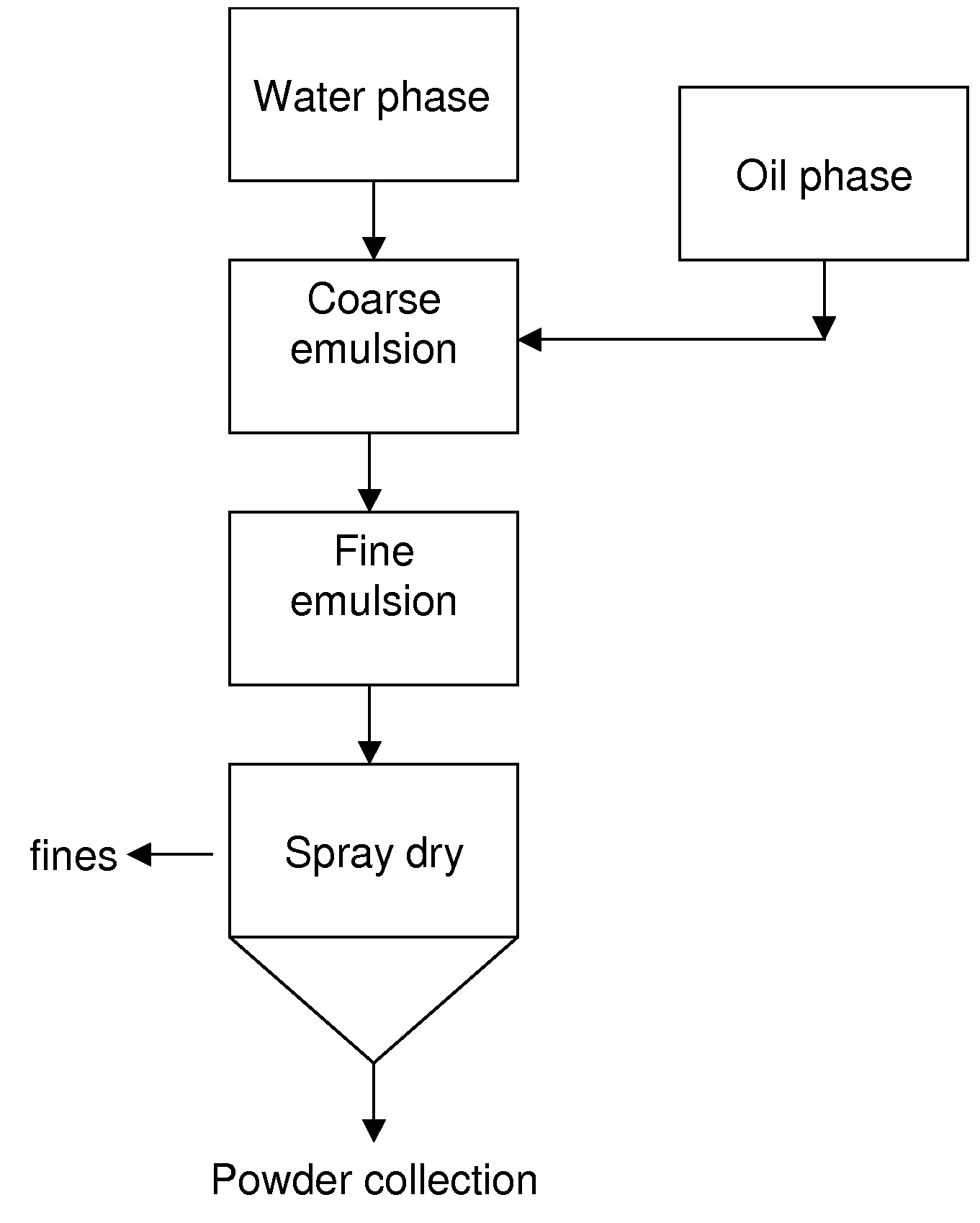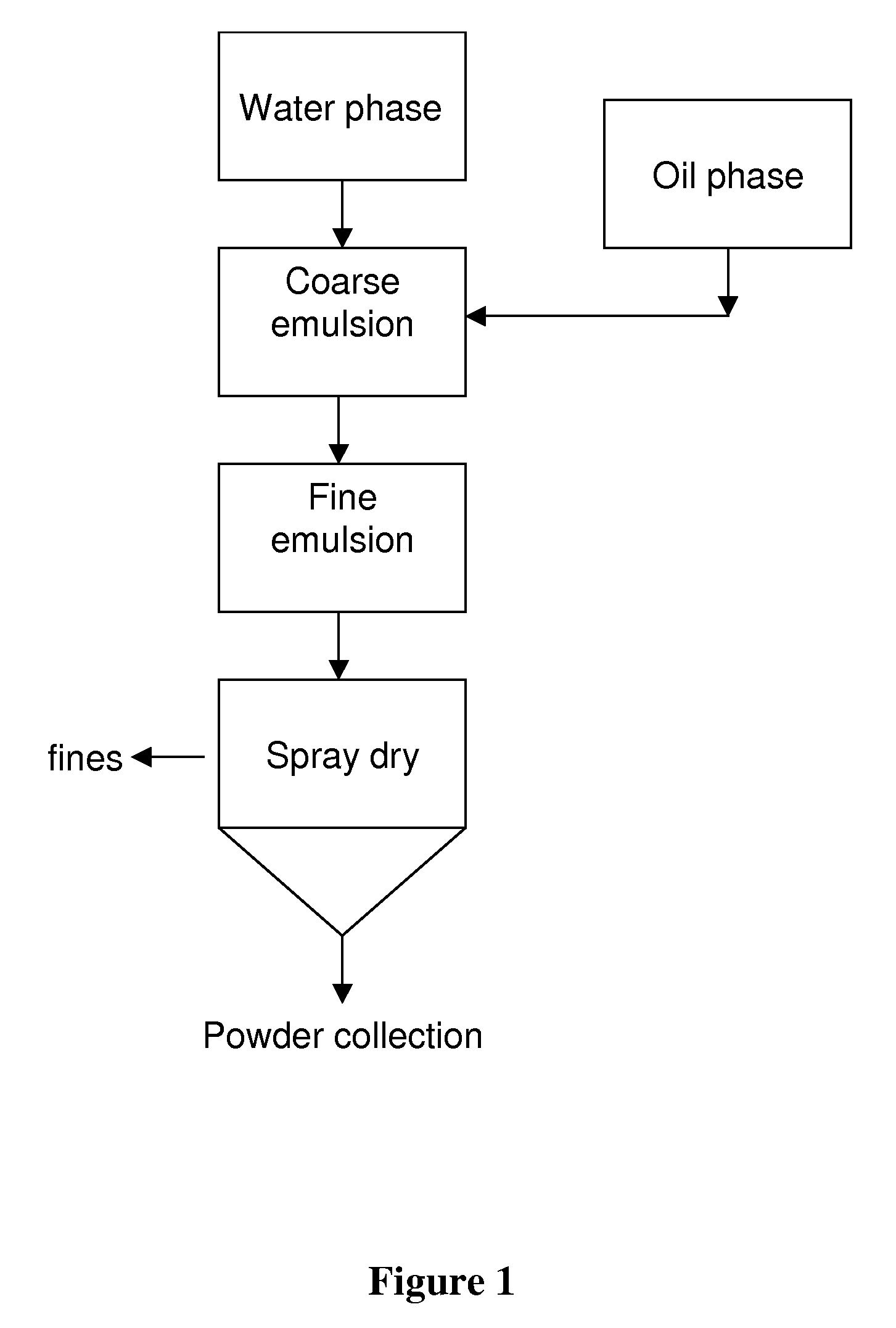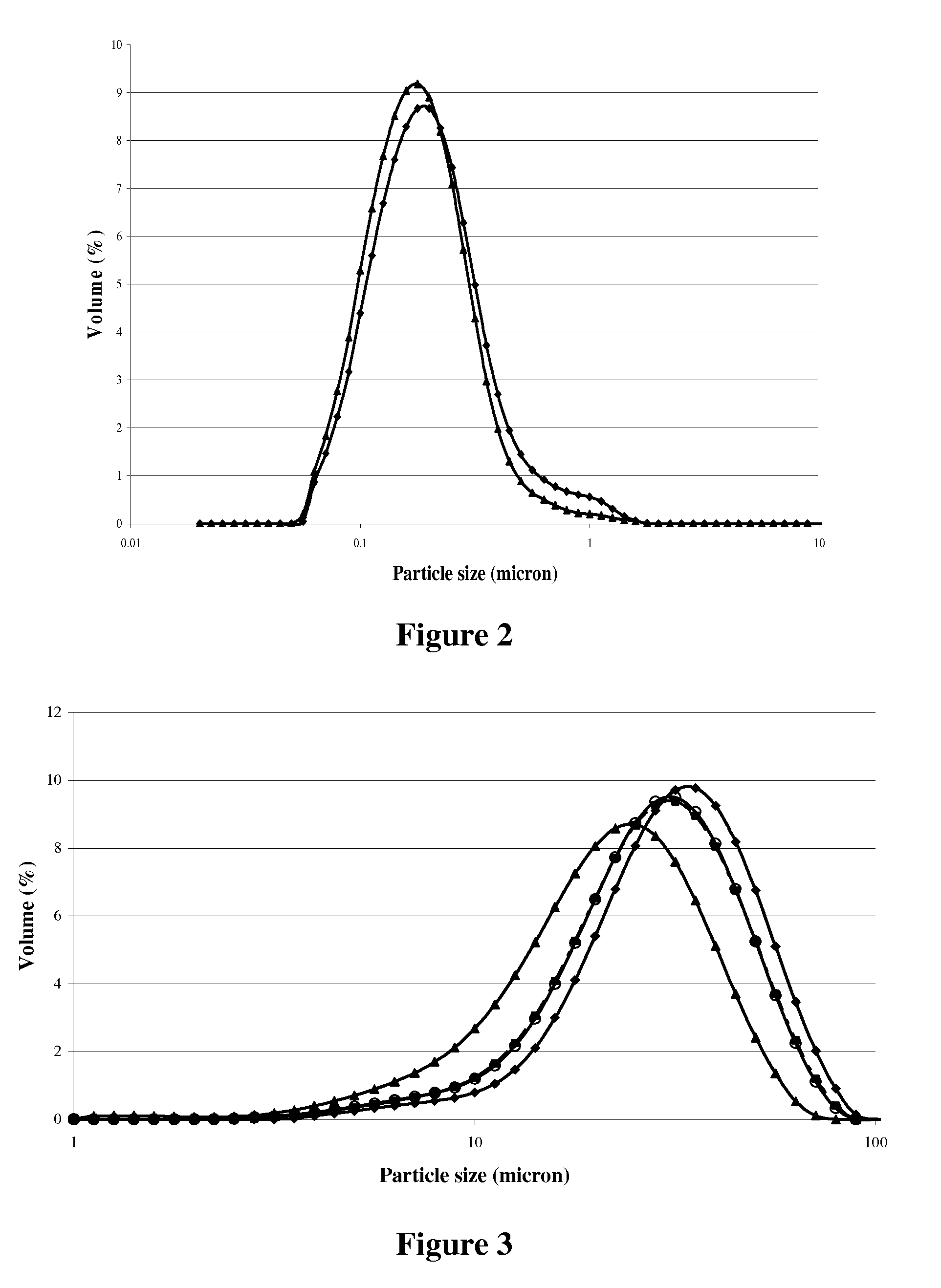Microencapsulating compositions, methods of making, methods of using and products thereof
- Summary
- Abstract
- Description
- Claims
- Application Information
AI Technical Summary
Benefits of technology
Problems solved by technology
Method used
Image
Examples
example 1
[0113]This example describes a general method for the preparation of the microencapsulated oils and Example 2 further describes preparation of specific microencapsulated oils.
[0114]Ingredient usage levels are outlined in Table 1. A protein source and a fraction of carbohydrate for caramelization are hydrated in water for 30 minutes at 55-60° C. with constant agitation. Once ingredients are hydrated and fully dispersed, the pH is adjusted to 10.5-11.0 with NaOH. The adjusted solution is heated under reflux at 90-95° C. for 60 minutes (time starts at 90° C.). Following the hydrolysis / caramelization reaction, the solution is cooled and pH measured. If the pH is greater than 7, citric acid solution is added drop-wise until a final pH of approximately 7.0 is obtained. Finally, Martek DHA™-HM micro-algal oil derived from Schizochytrium, additional carbohydrate, and sodium ascorbate are added to the cooled solution and mixed for 3 minutes at 4,000 rpm to form coarse emulsion. Particle size...
example 2
[0115]This Example describes the preparation of microencapsulated oils by the method of Example 1 and variations of the method.
[0116]A. The method of Example 1 was performed with soy protein isolate (SPI) and glucose (a reducing sugar) to prepare microencapsulated Martek DHA™-HM oil.
[0117]B. The method of Example 1 to prepare microencapsulated Martek DHA™-HM oil was performed with SPI and glucose, except that the SPI was not hydrolyzed. That is, the caramelization reaction was performed in the absence of SPI. SPI, and additional carbohydrate were added after the caramelization step and cooling, but prior to the addition of the oil for emulsification.
[0118]C. The method of Example 1 to prepare microencapsulated Martek DHA™-HM oil was performed with SPI and sucrose (a non-reducing sugar).
[0119]D. The method of Example 1 to prepare microencapsulated Martek DHA™-HM oil was performed with a commercially available hydrolyzed soy protein isolate (HSPI) having 28% hydrolysis, and glucose.
[0...
example 3
A. Formulations
[0128]The formulations and calculated compositions of the emulsions for making spray dried powders are listed in Table 3
TABLE 3Formulations and compositions of emulsions for making spraydried powders#1#2#3EmulsionEmulsionEmulsionFormulation(%)(%)(%)SupplierDHA ™-HM23.416.216.2MartekHM 75-4088Corn Oil07.20MazolaStable-Flake ® S007.2CargillMono-glycerides0.2340.2340.234DaniscoMasking agent0.3510.3510.351FirmenichVitablend ™ TAP101000.02880.0288VitablendWhey protein isolate444DaviscoBiPRO ®Maltose syrup 65%3.53.53.5Cargill(caramelized)Maltose syrup 65%888CargillGlucose syrup 95%2.32.34.6CargillSodium Ascorbate1.21.21.2WeishengWater57.01556.98654.686Total100100100Calculated EmulsionCompositions#1#2#3Total solids (%)38.8738.9039.65Total protein (%)3.603.603.60Total fat (%)23.6823.7123.71Total DHA (%)8.195.675.67Total carbohydrate (%)11.4511.4512.20Total ash (%)0.130.130.13Total solids (%) - MeasuredNA41.1741.00
[0129]As it is shown in Table 3, the overall oil load in the fo...
PUM
| Property | Measurement | Unit |
|---|---|---|
| Temperature | aaaaa | aaaaa |
| Fraction | aaaaa | aaaaa |
| Fraction | aaaaa | aaaaa |
Abstract
Description
Claims
Application Information
 Login to View More
Login to View More - R&D
- Intellectual Property
- Life Sciences
- Materials
- Tech Scout
- Unparalleled Data Quality
- Higher Quality Content
- 60% Fewer Hallucinations
Browse by: Latest US Patents, China's latest patents, Technical Efficacy Thesaurus, Application Domain, Technology Topic, Popular Technical Reports.
© 2025 PatSnap. All rights reserved.Legal|Privacy policy|Modern Slavery Act Transparency Statement|Sitemap|About US| Contact US: help@patsnap.com



